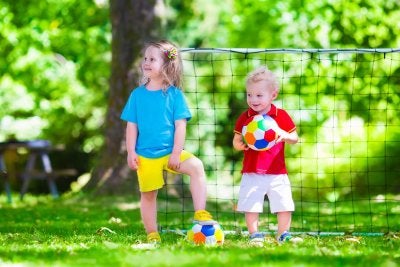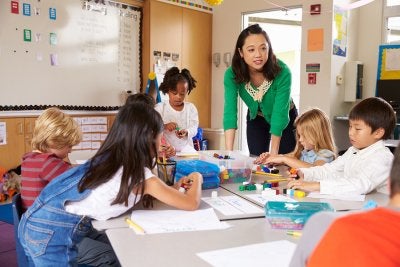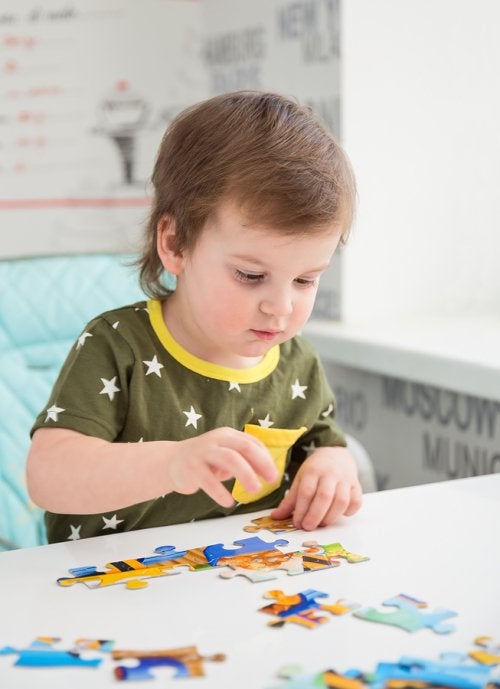-
How Can I Get My First-Grader to Eat Vegetables?
If you have been struggling with your Pembroke Pines first-grader’s eating habits, then it is time to learn new tactics. You can help your child eat more vegetables by packing snacks to take to his first-grade class and masking vegetables with other foods. Let’s take a closer look at some easy ways to get your first-grader to eat vegetables.

Encourage the “One Bite” Rule
The “one bite” rule is a simple way to encourage your child to try new foods. He must take one bite of the vegetable he does not like before he can say no to eating it. This rule can prevent your child from vetoing new foods based on their look or smell before ever tasting them.
Make Vegetables into Snacks
If your child is hungry throughout the day, then that is the perfect time to encourage him to eat healthy vegetable snacks. Do not stock your refrigerator or pantry with chips, sweets, or over-processed foods. Instead, pack small, sealable cups with a variety of vegetables and salad dressing, hummus, or peanut butter that your child can grab whenever he wants. He can also bring these snacks to his first-grade class for lunches and snack time.
Mask Vegetables in Other Foods
You may help your child to get his daily allowance of vegetables by disguising them in other foods. You can cut vegetables into small pieces that will blend in with other foods. You can also puree many vegetables, such as spinach or sweet potatoes, and add them to sweets like brownies and cookies. Your child may also respond to eating his vegetables by dipping them into dressings or cheese.
Cook Meals with Your Child
It is important to include your first-grader in your cooking habits, because he can learn how to measure for his first-grade math skills. However, cooking with your child will also help him to eat his vegetables. If he has taken part in making the meal, then he is likelier to want to eat what he made.
-
Top Tips for Transitioning from Summer Camp to School
The days are getting shorter, and the temperatures are dropping. For parents and students, these changes mean the end of summer break and the beginning of a new school year. If your child is enrolled in summer camp in Pembroke Pines , then continue reading for tips on helping her with the transition to school this fall.

Get Back on Schedule
Even though your child is keeping busy at summer day camp and benefiting from regular mental stimulation, there is a good chance that she, like many other students, is in a summertime mindset that may make it difficult for her to get back into learning mode. One way to help prepare your child for the transition from camp to school is to make a gradual return to a normal schedule. For example, you might get her back on a good bedtime schedule or set aside time for learning that will be replaced with homework once the semester begins.
Spend Time in Nature
For kids in summer camp, their break from school means lots of time spent outdoors surrounded by and experiencing nature. To make the transition back to a classroom setting an easier one for your child, think about how you can incorporate outdoor activities into your normal routine. To do this, you could start taking daily walks to the park, arranging weekend day trips to the forest, or helping your child start her own backyard garden.
Talk About Any Fears
Some kids are always excited about going back to school. Others, however, face anxiety about entering a new classroom setting. If your child experiences fear about leaving summer camp and beginning a fresh school year, then set aside time to address her worries, and speak with her about the fun experiences she should look forward to and all the friends she can make. Finally, you can even approach this with a role play technique by setting up a classroom at home and arranging learning activities for you and your child to complete together.
-
Teaching Social Awareness and Acceptance in First Grade
Will your child be starting first grade in Pembroke Pines ? If so, then both of you are probably excited about this next step, and you may realize that now is a time of rapid development for your student. Read on to learn how your child can benefit from being introduced to social awareness and acceptance while he is in first grade.

Noticing Differences
Children become aware of differences between themselves and others around age 2 or 3. At these ages, they begin to differentiate between boys and girls, show curiosity in differences in hair and skin color, and become aware of obvious disabilities. Additionally, children start to develop racial identities and attitudes at a young age, and research suggests that kids as young as 3 who are exposed to racism and prejudice may embrace and accept these views, even if they don’t understand the feelings behind them. For these reasons, it can be beneficial to introduce first graders to the concepts of social acceptance and awareness at this stage in their development.
Reversing Biases
The bright side for any concerned parent is that biases which children pick up can be reversed and unlearned through positive exposure to diversity. Children have an inherent affinity for fairness, and harnessing this desire and using it as a springboard for conversations about bias and discrimination can help build social awareness and acceptance in children. On the other hand, research has shown that when not addressed, children will notice differences and may develop prejudices, even if they are not discussed by parents. Because of this, not talking to and teaching first graders about bias can allow discriminatory notions to become entrenched in their developing minds.
Learning Elementary Strategies
First grade is an ideal time to teach understanding, awareness, and social acceptance to children. For this purpose, experts recommend 5 strategies that can be beneficial to elementary school-aged children. Using children’s literature, teaching anti-bias lessons, exploring solutions, incorporating the news and media, and giving examples that they can recognize and understand are all ways in which first graders can be introduced to and taught social awareness and acceptance.
-
The Importance of Hands-On Puzzles for Your Child’s Development
Few things are as important in early education and child development as hands-on activities. Puzzles are often used in early education classrooms as a tool to help children learn. You can bolster your child’s success in early education in Pembroke Pines by keeping hands-on puzzles available at home as well.
Hands-on puzzles provide three learning experiences for early education students. First, they get the opportunity to work on fine motor physical skills by holding the pieces and working them into different positions until they fit. Students get to practice cognitive skills as they attempt to solve the problem presented by the puzzle. Young learners also build emotional skills by working on puzzles, as they must practice patience and perseverance as they work to solve the puzzle and then are rewarded with the satisfaction of finishing the puzzle. When children solve puzzles together, they also get to practice social skills and learn to compromise and work collaboratively. Provide a variety of different puzzle types to boost your child’s learning experience.

-
The Importance of Preschool Curriculum
Preschool is an important element in kids’ learning near Pembroke Pines . It encourages socialization, fine motor skills, and the basics of academic education needed for children to succeed later in life.
As you can see in this short video, when children attend preschool, they have more opportunities for interaction with other children, as well as tools that they may not experience at home. Structured early childhood development helps children to learn more about the world around them from their peers and their teachers. This time, dedicated to an engaging kind of learning, is essential to children as they continue through life and school.
-
Knowing the Signs of a Great Preschool
Picking out the right preschool near Pembroke Pines shouldn’t be stressful. There are a few ways to pick the best preschool for your child. In the end, though, if you and your child feel it is the school for your family, you’ve probably picked the right one.
Fun Structure
 When you walk into a preschool classroom and see children having fun and learning at the same time, you’ve found a great school. Young children shouldn’t be wandering around aimlessly or running amuck; they also shouldn’t be glued to a chair, bored out of their minds. Teachers should be focused on fun learning activities, crafts, and educational games to keep children’s minds engaged.
When you walk into a preschool classroom and see children having fun and learning at the same time, you’ve found a great school. Young children shouldn’t be wandering around aimlessly or running amuck; they also shouldn’t be glued to a chair, bored out of their minds. Teachers should be focused on fun learning activities, crafts, and educational games to keep children’s minds engaged.Practical Learning
At such a young age, children don’t need to learn the intricacies of calculus and physics, but they can learn basic math and science as it applies to the world around them. Their teachers can show them how to add ingredients to a recipe; how flowers grow; or the ways the alphabet make up their classmates’ names. There are a variety of tactics teachers and parents can employ to teach children the fundamentals of academics and practical life
Adaptable Education
No one learns at the same pace, and learning centers should recognize that. The curriculum should be adaptable to each child or group of children, whether they are progressing above or behind the rest of the class. A good teacher will have the resources necessary to help each child progress at their own pace.
Individualized Attention
Many classrooms have become overcrowded, and that is not what you want to see in your preschool. There should be enough teachers and aides to give each child, or a small group of children, dedicated attention. This may in the form of reading a book or individual tutoring as children need it. The class should still come together as a whole to learn new concepts and rules, but there should be adults available for every child to receive extra attention.
-
What to Pack in Your Preschooler’s Lunch
When your child enters preschool, he or she may become quite opinionated regarding school lunches. It’s a good idea to involve your child in the preparation process to allow him or her to enjoy some control. For example, ask your child if he or she would rather bring a wrap or a sandwich to the learning center in Pembroke Pines. Be sure to check whether the learning center is a nut-free facility.
In addition to packing the main entrée for your child’s lunch at preschool, offer him or her a choice of healthy sides. This video can help give you some ideas. The mom featured here sends her child to day care with healthy snacks such as strawberries, yogurt, and pepper slices.
RECENT POSTS
categories
- Uncategorized
- Early Learning Center
- Pre-K
- Children
- Child Care Center
- Preschooler
- Preschool Blog Category | Tanglewood Academy
- Preschool Lunch
- Tanglewood Academy
- After-School Program
- Toddler School
- Early Childhood Education
- preschool activities
- pre-kindergarten
- childhood education
- pre-kindergarten programs
- Children’s education
- enrichment opportunities
- Kindergarten
- Nurturing Education Environment
- Toddler Care
- Child Separation Anxiety
- Toddlers
- Summer camp
- summer activities
- VPK
- Voluntary Pre-K
- Outdoor Activities
- Smart Strategies
- Tie Shoes
- Snacks
- Physical Activities
- Education
- Enrichment Activities for Kids
- Early Education Activities
- Preschool Curriculum
- Classroom Learning
- APPLE accreditation
- Language Comprehension
